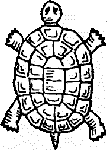One of my favorite, but little sung, carols. I hope you enjoy! To see more Blog Carols make sure you check
out the Footnote Maven’s Blog Caroling post.
Sung by the Mormon
Tabernacle Choir on YouTube
English: Bring a
torch, Jeanette, Isabelle!
Bring a torch, to the stable run
Christ is born. Tell the folk of the
village
Jesus is born and Mary's calling.
Ah! Ah! beautiful is the Mother!
Ah! Ah! beautiful is her child
Who is that, knocking on the door?
Who is it, knocking like that?
Open up, we've arranged on a platter
Lovely cakes that we have brought
here
Knock! Knock! Knock! Open the door
for us!
Knock! Knock! Knock! Let's
celebrate!
It is wrong when the child is
sleeping,
It is wrong to talk so loud.
Silence, now as you gather around,
Lest your noise should waken Jesus.
Hush! Hush! see how he slumbers;
Hush! Hush! see how fast he sleeps!
Softly now unto the stable,
Softly for a moment come!
Look and see how charming is Jesus,
Look at him there, His cheeks are
rosy!
Hush! Hush! see how the Child is
sleeping;
Hush! Hush! see how he smiles in
dreams!
French: Un
flambeau, Jeanette, Isabelle --
Un flambeau! Courons au berceau!
C'est Jésus, bonnes gens du hameau.
Le Christ est né; Marie appelle!
Ah! Ah! Ah! Que la Mère est belle,
Ah! Ah! Ah! Que l'Enfant est beau!
Qui vient la, frappant de la porte?
Qui vient la, en frappant comme ça?
Ouvrez-donc, j'ai pose sur un plat
Des bons gateaux, qu'ici j'apporte
Toc! Toc! Toc! Ouvrons-nous la
porte!
Toc! Toc! Toc! Faisons grand gala!
C'est un tort, quand l'Enfant
sommeille,
C'est un tort de crier si fort.
Taisez-vous, l'un et l'autre,
d'abord!
Au moindre bruit, Jésus s'éveille.
Chut! chut! chut! Il dort à
merveille,
Chut! chut! chut! Voyez comme il
dort!
Doucement, dans l'étable close,
Doucement, venez un moment!
Approchez! Que Jésus est charmant!
Comme il est blanc! Comme il est
rose!
Do! Do! Do! Que l'Enfant repose!
Do! Do! Do! Qu'il rit en dormant!




















